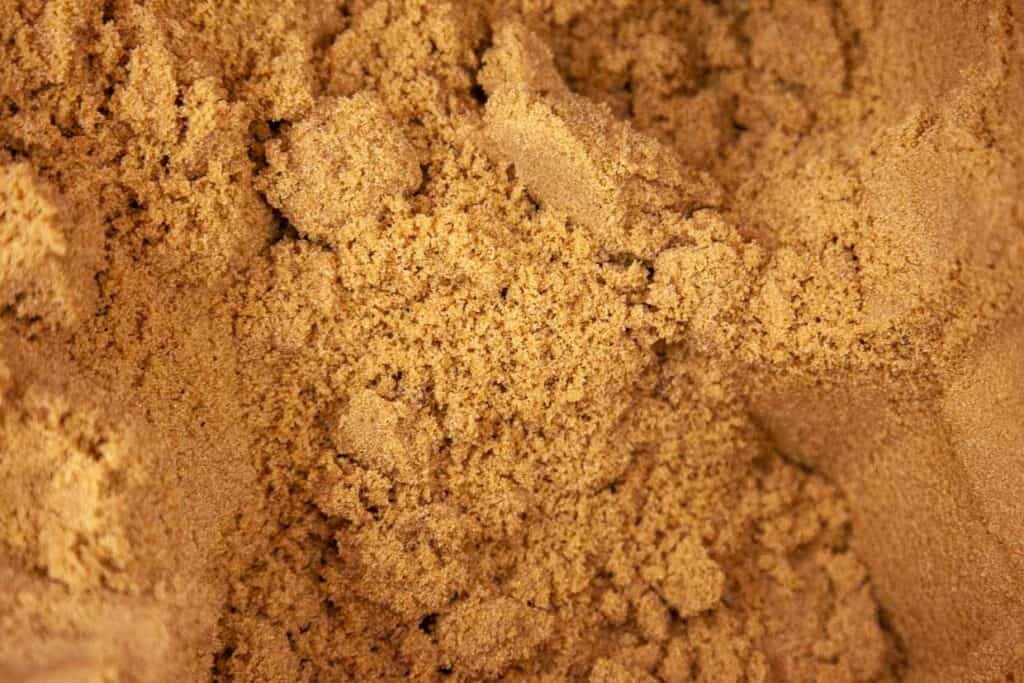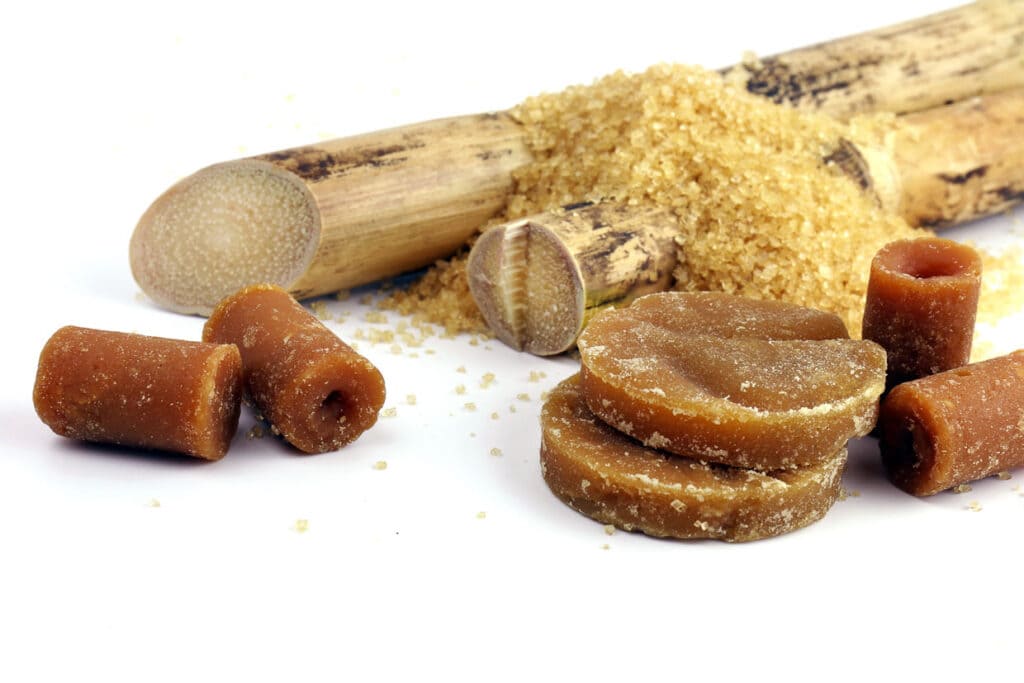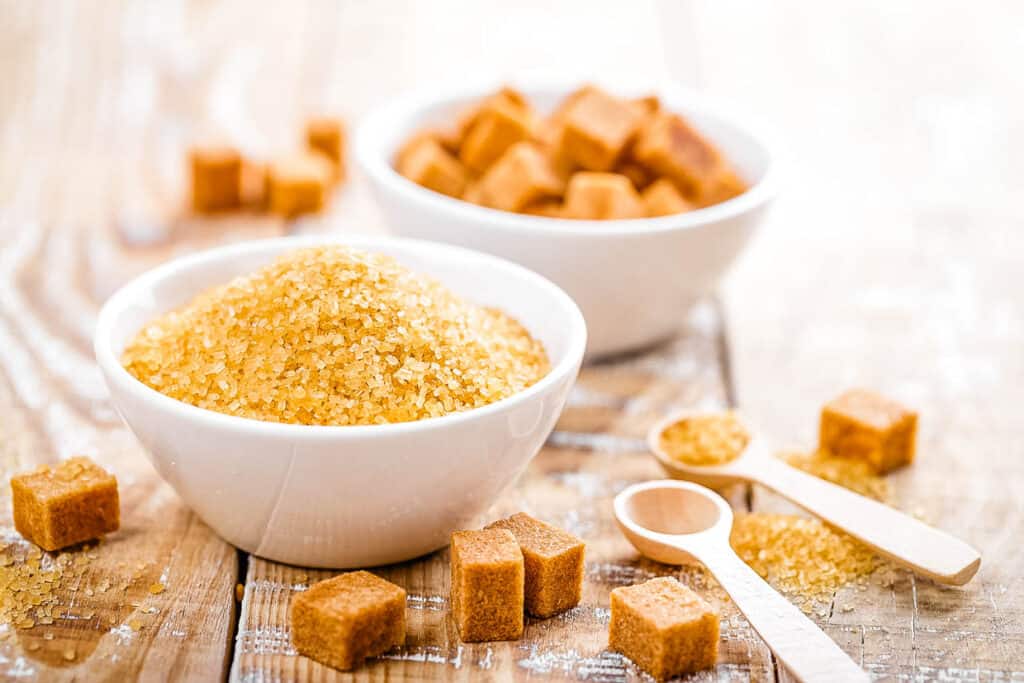With its molasses-kissed flavor, brown sugar is a pantry staple that can transform ordinary recipes into truly memorable treats. Not limited to baking alone, the richness of this essential sweetener adds a deep caramel undertone that enhances savory glazes, tempers bitter vegetables and enriches desserts. Learn what brown sugar is, when to use it and why you should always keep it on hand in your pantry.

What is brown sugar?
Simply put, brown sugar is a combination of white sugar and molasses. When processing sugar cane and sugar beets, producers boil down the raw material to separate the sugar crystals from the molasses. This process is repeated, with the sugar becoming increasingly refined, creating different types of natural brown sugars that still contain some natural molasses.
The molasses created during this process is a thick, dark brown, viscous syrup. Its flavor is rich, with tones of burnt caramel, smoke and a unique combination of bitter and sweet flavors. The inclusion of molasses in brown sugar makes it so rich and flavorful, setting it apart from brown sugar substitutes.
Once fully refined, the resulting sugar is commonly known as white granulated sugar. Producers then combine the white sugar with the molasses by-product to create refined brown sugar, which is the common type used in household baking.
Types of brown sugar
There are many types of brown sugar, which mainly fall into two categories: unrefined and refined. Unrefined, or natural, brown sugars are created by extracting different rates of molasses from sugar cane, while producers make refined brown sugars by combining molasses and refined white sugar. Different types of brown sugar have various origins and uses and can have different names depending on where in the world they originate from.

Unrefined brown sugars
While called unrefined, no brown sugar is actually raw or fully unrefined; it is just less refined than its so-called refined counterparts. Unrefined sugars are often produced on a small scale and come in different forms.
The least refined brown sugars, like piloncillo from Mexico, Okinawa sugar from Japan and panela from Colombia, are available in solid sugar shaped into cones or loaves. Sucanat, which stands for sugar cane natural, is a free-flowing, unrefined brown sugar created by a trademarked drying process.
Brown sugars that are slightly more refined will come in the form of crystals or granules. The darker they are, the more molasses they contain. This category includes turbinado and demerara sugars, which are great for adding to coffee or sprinkling on top of baked goods to add a sparkly crunch.
Muscovado is an unrefined brown sugar that resembles refined brown sugar most closely. Darker than standard dark brown sugar, it has a rich flavor and moist, sandy-like texture.
Refined brown sugars
Once the sugar cane or sugar beet is fully processed to separate the white sugar from the molasses, it is used to make refined brown sugar. This is the type of sugar people are most familiar with and the one used in standard American baking recipes.
To make brown sugar, processors combine white refined sugar with molasses using standard ratios. Light brown sugar contains the least molasses, about one tablespoon per cup of white sugar, while dark brown sugar relies on more molasses to give it that darker, richer flavor. If you ever run out, you can easily make brown sugar at home.
Baking with brown sugar
Brown sugar provides more than just sweetness to a recipe. The addition of molasses also contributes moisture, flavor and acidity. While the change in flavor is an obvious effect, the acidity can have a scientific impact, too. If your recipe relies on baking soda to rise, the acidity in the molasses causes that to happen. Without it, your cookies will fall flat.
Brown sugar enhances a variety of baked goods, such as cookies, cakes and candies. This recipe for strawberry shortcake swaps white sugar for brown in the cake to create a richer flavor that enhances the cardamom spice and makes it truly unique. At the same time, using brown sugar instead of white to make caramel results in a genuinely decadent butterscotch sauce.
Unless specified, recipes that call for brown sugar typically refer to refined light or golden brown sugar. However, refined dark brown sugar will give your baked goods a more decadent flavor without impacting the performance of the recipe. Whichever one you have on hand will provide you with delicious results.
Brown sugar beyond baking
While brown sugar may be sweet, its usefulness is not limited to baking. It can be found in recipes for savory dishes, drinks and even skincare.
You can add it to marinades to help tenderize meat, balance naturally occurring bitter flavors in vegetables like Brussels sprouts or increase caramelization when roasting. Gena Lazcano, from Ginger Casa, says, “I love using brown sugar in my homemade BBQ sauce. It provides a richer flavor that simple table sugar doesn’t.”
Unrefined, raw sugars have become so popular in coffee and tea that you’ll often find little brown packets at your local coffee bar right next to the white sugar packets. These same sugars also look as beautiful on the rim of a glass at a fancy cocktail bar as they do on top of a gourmet cookie.

Brown sugar as a pantry staple
More than just a sweetener for baked goods, brown sugar is a unique ingredient that can transform savory and sweet culinary creations alike. Its rich molasses flavor, acidity and moisture-retaining properties allow it to enhance baked goods, meats, vegetables, coffees and cocktails with a complexity that makes it an indispensable pantry staple. No matter which type of brown sugar you like to keep on hand, there are plenty of creative ways to use it to add a special touch.
Renee N Gardner is the creative mastermind behind Renee Nicole’s Kitchen, a recipe blog based on seasonal ingredients, dedicated to helping home cooks build their kitchen confidence to become home chefs. When Renee isn’t writing, developing recipes or photographing food, you’ll find her in the garden, traveling or enjoying the outdoors with her husband, son and two dogs.